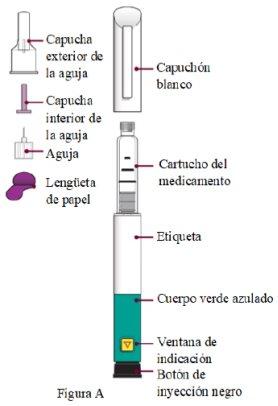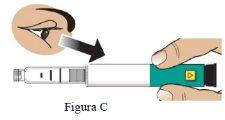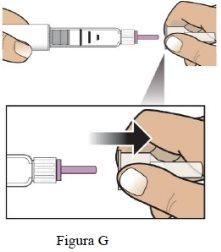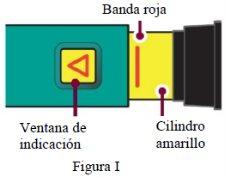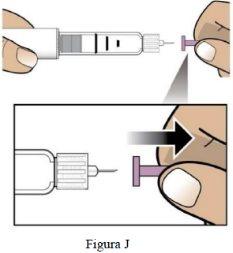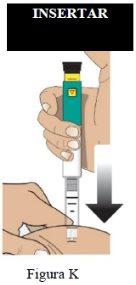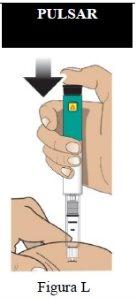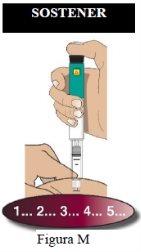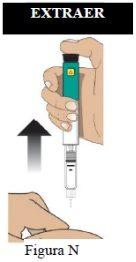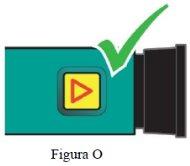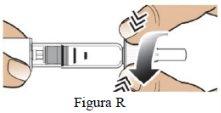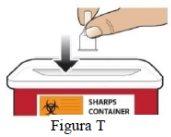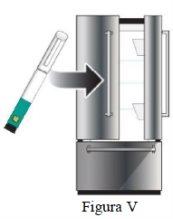
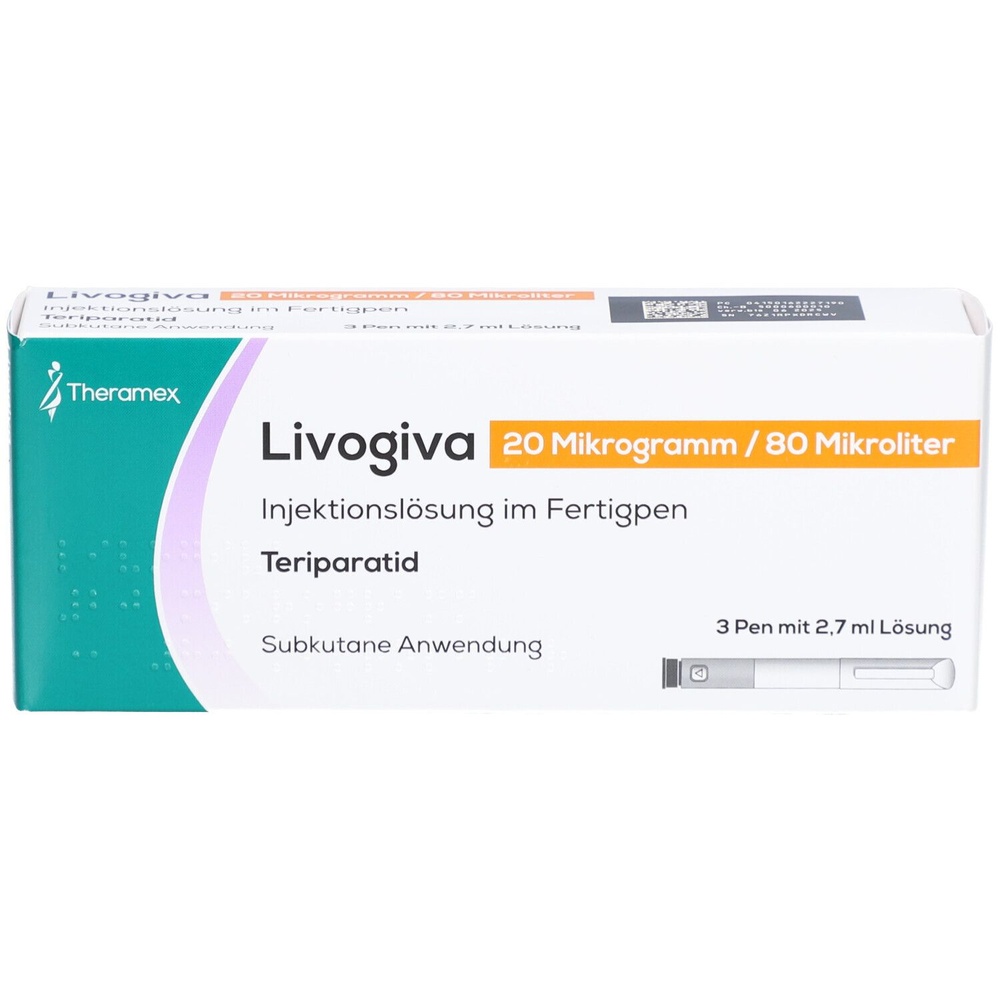
LIVOGIVA 20 micrograms/80 microliters Injectable Solution in Pre-filled Pen

Ask a doctor about a prescription for LIVOGIVA 20 micrograms/80 microliters Injectable Solution in Pre-filled Pen

How to use LIVOGIVA 20 micrograms/80 microliters Injectable Solution in Pre-filled Pen
Introduction
Package Leaflet: Information for the User
Livogiva 20 micrograms/80 microliters solution for injection in pre-filled pen
teriparatide
This medicinal product is subject to additional monitoring, which will allow for quick identification of new safety information. You can help by reporting any side effects you may get. The last section of this leaflet includes information on how to report side effects.
Read all of this leaflet carefully before you start using this medicine, because it contains important information for you.
- Keep this leaflet, you may need to read it again.
- If you have any further questions, ask your doctor or pharmacist.
- This medicine has been prescribed for you only. Do not pass it on to others. It may harm them, even if their symptoms are the same as yours.
- If you get any side effects, talk to your doctor or pharmacist. This includes any possible side effects not listed in this leaflet. See section 4.
Contents of the pack
- What is Livogiva and what is it used for
- What you need to know before you use Livogiva
- How to use Livogiva
- Possible side effects
- Storage of Livogiva
- Contents of the pack and other information
1. What is Livogiva and what is it used for
Livogiva contains the active substance teriparatide, which is used to increase bone strength and reduce the risk of fractures by stimulating bone formation.
Livogiva is used for the treatment of osteoporosis in adults. Osteoporosis is a disease that makes your bones waste away and become fragile. This disease is especially common in women after menopause, but it can also occur in men. Osteoporosis is also common in patients treated with corticosteroids.
2. What you need to know before you use Livogiva
Do not use Livogiva
- if you are allergic to teriparatide or any of the other ingredients of this medicine (listed in section 6).
- if you have high levels of calcium in your blood (pre-existing hypercalcaemia).
- if you have severe kidney problems.
- if you have been diagnosed with bone cancer or other types of cancer that have spread to your bones.
- if you have certain bone diseases. If you have a bone disease, consult your doctor.
- if you have high levels of alkaline phosphatase in your blood without any apparent reason, which could indicate that you have Paget's disease of the bone (a disease with abnormal bone changes). If you are not sure, consult your doctor.
- if you have received radiation therapy that may have affected your bones.
- if you are pregnant or breastfeeding.
Warnings and precautions
Livogiva may cause an increase in the amount of calcium in your blood or urine.
Consult your doctor or pharmacist before starting or while using Livogiva:
- if you continuously have nausea, vomiting, constipation, low energy or muscle weakness, tell your doctor. These may be symptoms of too much calcium in your blood.
- if you have kidney stones or have a history of kidney stones.
- if you have kidney problems (moderate renal insufficiency), you should tell your doctor.
Some patients, after the first doses, may feel dizzy or have an increased heart rate. For the first doses, use Livogiva in a place where you can sit or lie down immediately if you feel dizzy.
The recommended treatment period of 24 months should not be exceeded. Livogiva should not be used in growing adults.
Children and adolescents
Livogiva should not be used in children and adolescents (under 18 years of age).
Other medicines and Livogiva
Tell your doctor or pharmacist if you are using, have recently used or might use any other medicines, because occasionally interactions may occur (e.g. digoxin/digitalis, a medicine used to treat heart diseases).
Pregnancy and breastfeeding
Do not use Livogiva if you are pregnant or breastfeeding. If you are a woman of childbearing age, you should use effective contraceptive methods during treatment with Livogiva. If you become pregnant, treatment with Livogiva should be discontinued. Consult your doctor or pharmacist before using any medicine.
Driving and using machines
Some patients may feel dizzy after injecting Livogiva. If you feel dizzy, do not drive or use machines until you feel better.
Livogiva contains sodium
This medicine contains less than 23 mg of sodium (1 mmol) per dose; this is essentially 'sodium-free'.
3. How to use Livogiva
Follow exactly the administration instructions of this medicine as indicated by your doctor.
In case of doubt, consult your doctor or pharmacist again.
The recommended dose is 20 micrograms administered once a day by subcutaneous injection in the thigh or abdomen. To help you remember to use your medicine, inject yourself at the same time every day.
Inject Livogiva every day for as long as your doctor prescribes it. The total duration of treatment with Livogiva should not exceed 24 months. You should not receive more than one 24-month treatment cycle with Livogiva in your lifetime.
Your doctor may recommend that you use Livogiva with calcium and vitamin D. Your doctor will tell you how much to take each day.
Consult the User Manual included in the package with instructions on how to use the Livogiva pen.
No needles are included with the pen. Needles for pens of 29-31 gauge (diameter: 0.25-0.33 mm) can be used.
The injection of Livogiva should be performed shortly after removing the pen from the refrigerator, as indicated in the User Manual. Put the pen back in the refrigerator immediately after use. You should use a new needle for each injection and discard it after each use. Do not store the pen with the needle attached. Never share your Livogiva pen with others.
Livogiva can be used with or without food.
If you use more Livogiva than you should
If you have accidentally administered more Livogiva than prescribed, consult your doctor or pharmacist.
The effects that could be expected from an overdose include nausea, vomiting, dizziness and headache.
If you forget or are unable to inject Livogiva at the usual time, do it as soon as you can that same day. Do not administer a double dose to make up for forgotten doses. Do not inject more than once on the same day. Do not try to make up for the forgotten dose.
If you stop treatment with Livogiva
If you are thinking of stopping treatment with Livogiva, please consult your doctor. Your doctor will advise and decide how long you should be treated with Livogiva.
If you have any other questions about the use of this medicine, ask your doctor or pharmacist.
4. Possible side effects
Like all medicines, this medicine can cause side effects, although not everybody gets them.
The most common side effects are pain in the limbs (very common, may affect more than 1 in 10 patients), discomfort, headache and dizziness (common). If you feel dizzy after an injection, sit or lie down until you feel better. If it does not improve, consult your doctor before continuing treatment. Cases of fainting associated with the use of teriparatide have been reported. If you experience discomfort such as redness of the skin, pain, swelling, itching, bruising or slight bleeding around the injection site (common), these should disappear within a few days or weeks. If not, tell your doctor as soon as possible.
Some patients may have experienced allergic reactions immediately after injection, consisting of difficulty breathing, swelling of the face, rash and chest pain (rare frequency). In rare cases, severe and potentially life-threatening allergic reactions, including anaphylaxis, may occur.
Other side effects are:
Common: may affect up to 1 in 10 patients
- increase in blood cholesterol levels
- depression
- neuralgic pain in the leg
- feeling of fainting
- irregular palpitations
- difficulty breathing
- increased sweating
- muscle cramps
- loss of energy
- fatigue
- chest pain
- low blood pressure
- heartburn (pain or burning sensation just below the breastbone)
- vomiting
- hiatus hernia (a condition where part of the stomach pushes up into the chest)
- low hemoglobin or low red blood cell count (anemia)
Uncommon: may affect up to 1 in 100 patients
- increased heart rate
- abnormal heart sound
- shortness of breath
- hemorrhoids (piles)
- accidental or involuntary loss of urine
- increased need to urinate
- weight gain
- kidney stones
- pain in the muscles and joints. Some patients have experienced severe back cramps or pain and had to be hospitalized.
- increase in blood calcium levels
- increase in blood uric acid levels
- increase in the levels of an enzyme called alkaline phosphatase.
Rare: may affect up to 1 in 1,000 patients
- reduction in kidney function, including kidney failure
- swelling, mainly in the hands, feet and legs.
Reporting of side effects
If you experience any side effects, talk to your doctor or pharmacist. This includes any possible side effects not listed in this leaflet. You can also report side effects directly through the national reporting system included in Appendix V. By reporting side effects, you can help provide more information on the safety of this medicine.
5. Storage of Livogiva
Keep this medicine out of the sight and reach of children.
Do not use this medicine after the expiry date which is stated on the pack and the pen after CAD and EXP respectively. The expiry date is the last day of the month stated.
Livogiva should be stored in a refrigerator (between 2°C and 8°C). You can use Livogiva for 28 days after the first injection, while the pen is stored in a refrigerator (between 2°C and 8°C).
Avoid placing the pens near the freezer compartment of the refrigerator to prevent freezing. Do not use Livogiva if it has been frozen.
Each pen should be disposed of properly after 28 days, even if it is not empty.
Livogiva contains a clear and colorless solution. Do not use Livogiva if it has solid particles or if the solution is cloudy or discolored.
Medicines should not be disposed of via wastewater or household waste. Ask your pharmacist how to dispose of medicines no longer required. This will help protect the environment.
6. Container Contents and Additional Information
Livogiva Composition
- The active ingredient is teriparatide. Each milliliter of injectable solution contains 250 micrograms of teriparatide. Each 2.7 ml pre-filled pen contains 675 micrograms of teriparatide (equivalent to 250 micrograms per milliliter).
- The other components are glacial acetic acid, sodium acetate trihydrate, mannitol, metacresol, and water for injectable preparations. See section 2.
Product Appearance and Container Contents
Livogiva is a clear and colorless solution. It is presented in a cartridge included in a pre-filled disposable pen. Each pen contains 2.7 ml of solution sufficient for 28 doses. Livogiva is available in packs containing one or three pre-filled pens.
Only some pack sizes may be available.
Marketing Authorization Holder
Theramex Ireland Limited
3rd Floor Kilmore House, Park Lane, Spencer Dock
DO1 YE64 Dublin 1
Ireland
Manufacturer
Eurofins PROXY Laboratories (PRX)
Archimedesweg 25 2333 CM Leiden
Netherlands
Date of Last Revision of this Leaflet
Other Sources of Information
Detailed information on this medicinal product is available on the European Medicines Agency website http://www.ema.europa.eu/.
INSTRUCTIONS FOR USE
Livogiva 20 micrograms/80 microliters solution for injection in pre-filled pen
IMPORTANT INFORMATION
DO NOTstart administration until you have carefully read the leaflet and this instructions manual contained in the Livogiva box. Whenever you use the Livogiva pen, follow the instructions carefully.
Livogiva Pen and its Parts Needles for the pen of 29-31 gauge (diameter: 0.25-0.33 mm) can be used. Needles are not included. |
|
Instructions for Use
Preparing the Injection
Step 1 Prepare the injection site and remove the white cap. |
|
|
Step 2 Check the pen, pen label, and medication |
DO NOTuse the Livogiva pen if it is damaged.
If the pen does not contain the correct medication or the medication has expired, DO NOTuse it (Figure C).
If the medication is cloudy, has color, or contains particles in suspension, DO NOTuse it (Figure C). |
|
Step 3 Attach a new needle |
|
|
|
| |
Screw the needle clockwise until it is securely attached (Figure F). Do notovertighten the needle. |
|
Step 4 Remove the outer needle cap | Remove the large outer needle cap (Figure G) and save it for later(see Step 9). |
|
Step 5 Adjust the dose | Pullthe black injection button until it stops(Figure H). |
|
Make surethe red band is visible. In addition, the indicator window will show an arrow pointing towards the tip of the pen needle (Figure I). |
| |
Troubleshooting when adjusting the dose If the pen cannot be fully adjusted or you cannot pull the black injection button, refer to the Troubleshooting E section. |
Administering the Injection
Step 6 Remove the inner needle cap. | Removethe small inner needle cap and discard it (Figure J). The needle will be exposed. |
|
Step 7 Inject the dose |
|
|
|
| |
|
| |
|
|
After the Injection
Step 8 Confirm the dose. | Make surethe black injection button has been pushed in all the way. The indicator window will show an arrow pointing TOWARDSthe black button. If you do not see the yellow cylinder, you have successfully completed the injection steps (Figure O). Important DO NOTsee any part of the yellow cylinder. If you do and you have already injected the medication, DO NOTinject a second dose on the same day. Instead, YOU MUST re-adjust the pen. Refer to the Troubleshooting A section. |
|
Step 9 Remove the needle and discard it. |
|
|
|
| |
Remove the needle (Figure S). |
| |
DO NOT reuse the needle. |
| |
Needle Disposal If you need more information on proper needle disposal, refer to the Information on Needle Disposal section. |
Step 10 Cover the pen and store it. |
|
|
DO NOTstore the Livogiva pen with a needle attached, as this could affect the sterility of the medication during subsequent injections. |
|
Troubleshooting | |
Problem | Solution |
| To re-adjust the Livogiva pen, follow these steps:
You can avoid this problem by always using a NEW needle for each injection and pressing the black injection button all the way and counting slowly to 5. |
| The Livogiva pen is designed to inject the full dose each time it is used by following the instructions in the Instructions for Usesection. The black injection button must be pushed in all the way to confirm that the Livogiva pen has injected the full dose of medication. Remember to use a new needle each time you inject to ensure your Livogiva pen is working correctly. |
| A small air bubble will not affect your dose or harm you. You can proceed with administering your dose as usual. |
|
Refer to Step 9 «Remove the needle and discard it». |
| Switch to a new Livogiva pen to administer your dose as instructed by your doctor or pharmacist. When it is hard to pull the black injection button, it means there is not enough medication left in the Livogiva pen for another dose. You may still see some medication in the cartridge. |
Cleaning and Storage |
Cleaning the Livogiva Pen
Storing the Livogiva Pen
If you have left the Livogiva pen out of the refrigerator, do not discard it. Return it to the refrigerator and contact your doctor or pharmacist. |
Information on Needle Disposal |
Disposal of the Pen Needle and Livogiva Pen
|
Other Points of Interest |
|
This user manual was revised on:

How much does LIVOGIVA 20 micrograms/80 microliters Injectable Solution in Pre-filled Pen cost in Spain ( 2025)?
The average price of LIVOGIVA 20 micrograms/80 microliters Injectable Solution in Pre-filled Pen in December, 2025 is around 252.16 EUR. Prices may vary depending on the region, pharmacy, and whether a prescription is required. Always check with a local pharmacy or online source for the most accurate information.
- Country of registration
- Average pharmacy price252.16 EUR
- Active substance
- Prescription requiredYes
- Manufacturer
- This information is for reference only and does not constitute medical advice. Always consult a licensed doctor before taking any medication. Oladoctor is not responsible for medical decisions based on this content.
- Alternatives to LIVOGIVA 20 micrograms/80 microliters Injectable Solution in Pre-filled PenDosage form: INJECTABLE, 250 micrograms/mlActive substance: teriparatideManufacturer: Gp Pharm S.A.Prescription requiredDosage form: INJECTABLE, 250 µg/mlActive substance: teriparatideManufacturer: Eli Lilly Nederland B.V.Prescription requiredDosage form: INJECTABLE, 20/80 µg/mlActive substance: teriparatideManufacturer: Stada Arzneimittel AgPrescription required
Alternatives to LIVOGIVA 20 micrograms/80 microliters Injectable Solution in Pre-filled Pen in other countries
The best alternatives with the same active ingredient and therapeutic effect.
Alternative to LIVOGIVA 20 micrograms/80 microliters Injectable Solution in Pre-filled Pen in Poland
Online doctors for LIVOGIVA 20 micrograms/80 microliters Injectable Solution in Pre-filled Pen
Discuss dosage, side effects, interactions, contraindications, and prescription renewal for LIVOGIVA 20 micrograms/80 microliters Injectable Solution in Pre-filled Pen – subject to medical assessment and local rules.




